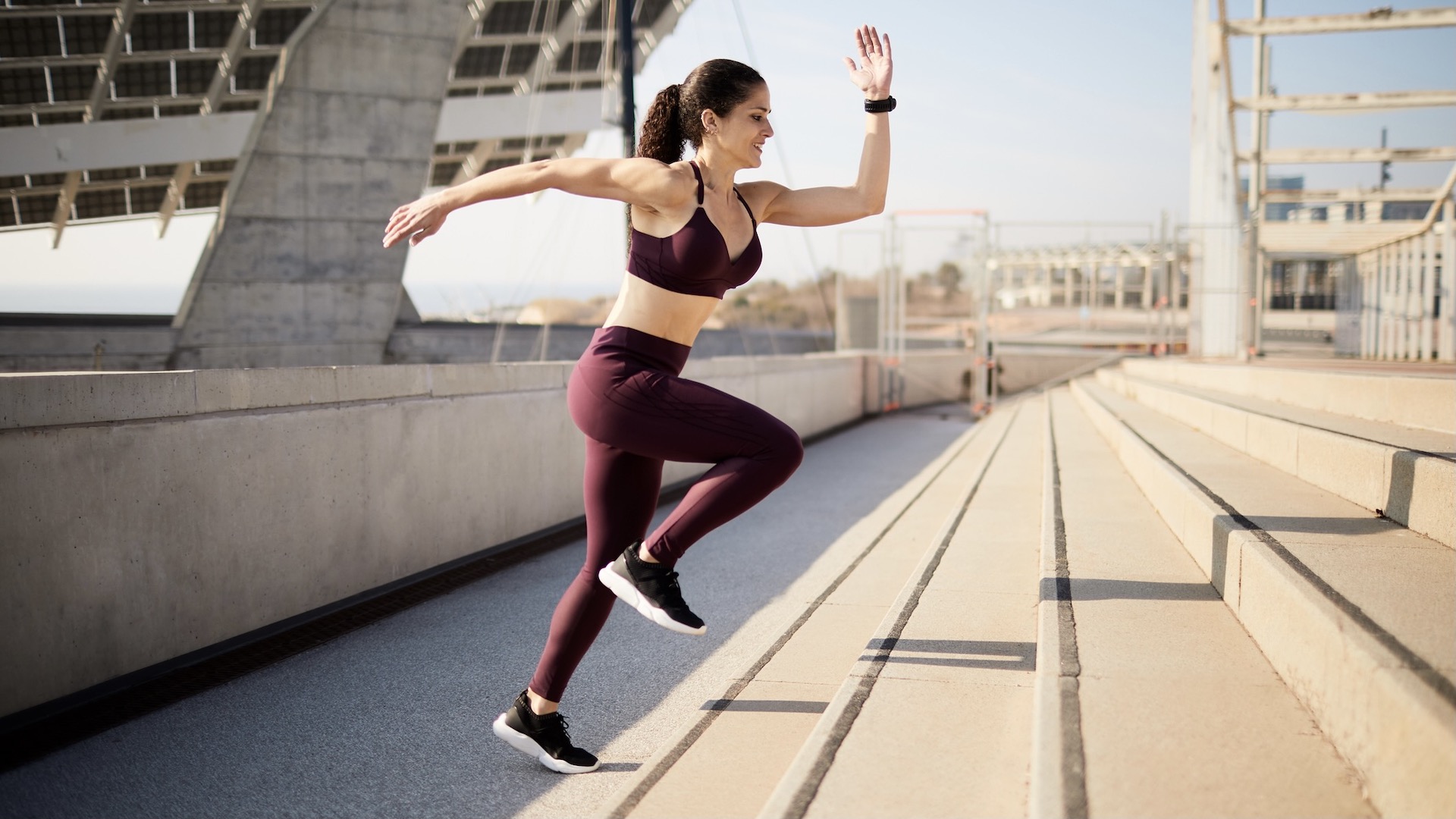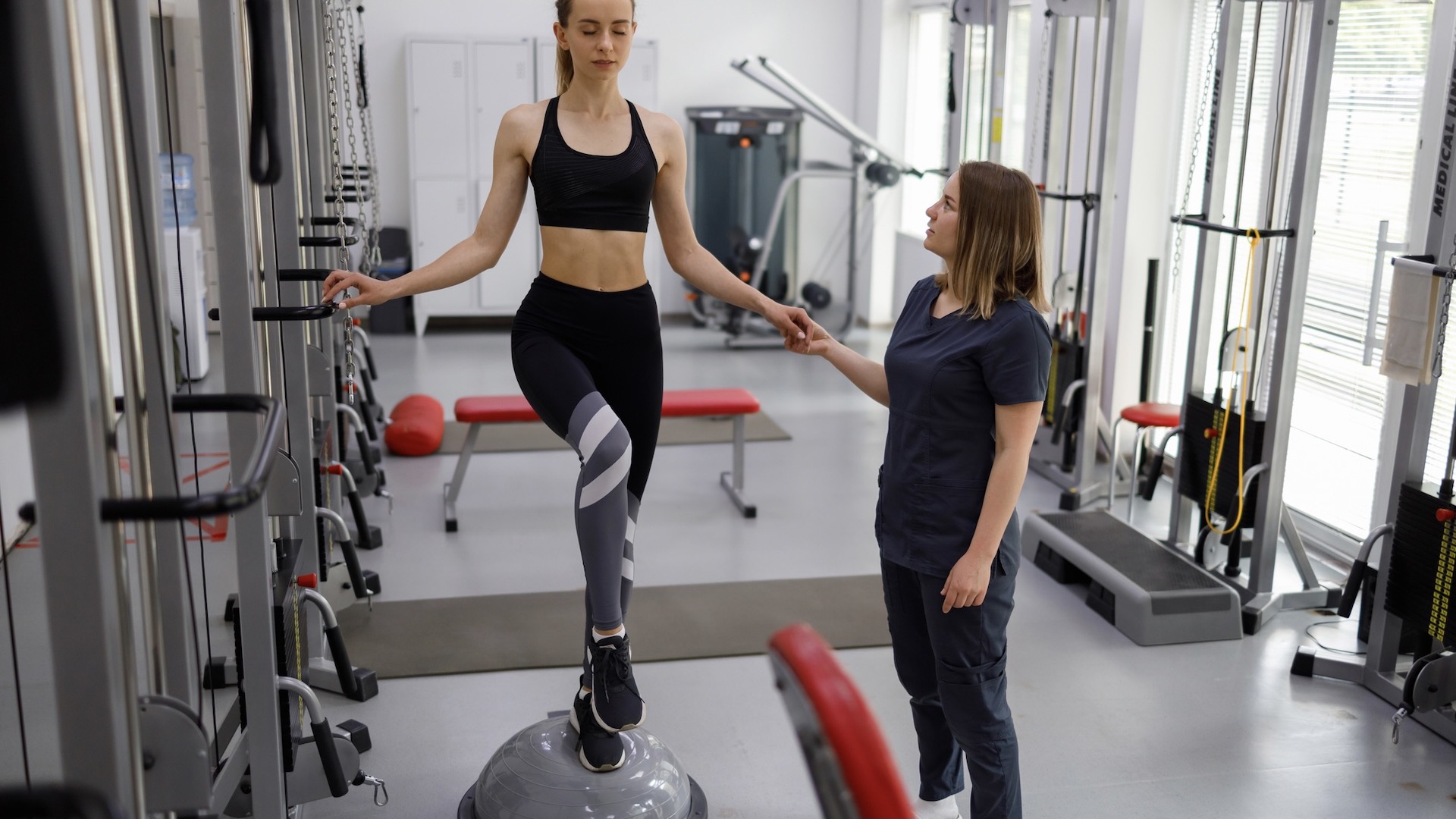5 essential balance exercises for runners to improve your control and stability
Discover why balance is key to being a better runner – and tips for improving your stability

Balance is a very important aspect of running. If you analyse the process of how we run, you will realise that each one-footed action requires balance. Even on a very smooth and even surface, the action of running requires us to be physically balanced. If you then add in other factors, such as uneven trails, pavement cambers, kerbs and steps, you will realise that each running step is a complex act of balancing.
If we do not employ good balance when we run, at worst, we’ll fall over, but also repeating the action of running without the right strength and flexibility for good balance will lead to niggles and injuries over time – and an unbalanced body will cause issues on one side of the body compared to the other.
Running injuries such as ankle sprains, anterior knee pain, runner’s knee, iliotibial band syndrome (ITBS) and hip pain can often be blamed on small movement irregularities related to control and balance.
Research has shown, too, that balance training and drills reduce injuries for sports people, while another study revealed that athletes with a high level of balance benefitted from improved performance markers compared to their less balanced peers.
While balance is something most of us take for granted, as runners we can benefit from improving it.
First, let’s define balance
Balance is your ability to stay in control – or stabilise – the body whether you are standing still or moving. Using more technical terms, balance is a combination of proprioception and kinesthetic awareness, which are determined by knowing where your body is in space.
We usually do this sub-consciously and it’s part of almost every movement we make, such as sitting down, getting up again, walking, running and jumping.
All the latest inspiration, tips and guides to help you plan your next Advnture!

Why is balance important for runners?
The better your balance the more positively this will affect a runner’s biomechanics, proprioception and coordination. And as the research shows, balance is a key for athletic performance.
Balance improves your running efficiency, keeps your centre of gravity in check and allows you to improve your running form, strength and power. Put simply, the better you balance, the faster you can move in a straight line.
How balanced are you as a runner?
To discover your personal balance ability, you can follow this test. Simply stand on one leg at a time.
To do this, start on one leg, engage your core muscles while keeping your hips tucked under you and bring your free leg up to a 90-degree angle.
Think about how much you wobble with your eyes open and then with your eyes closed. Is it different one side compared to the other?
You should be able to comfortably hold each side for 15 seconds or more.
This is you baseline balance to work from.

5 essential balance exercises for runners
To improve your balance for running, follow these exercises.
Single-leg balance on BOSU ball
This exercise is the same as the baseline single leg balance drill but on the surface of a BOSU ball, or some kind of wobble board.
The aim is to be able to balance on an uneven or unsteady surface. This requires more muscle strength, especially the core muscles, leg muscles and tendons and ligaments.
If you can balance on one leg without wobbling, try closing your eyes.
Hold each leg balance for 30 seconds or more.
Leg swings
Stand upright and with a straight back in a doorway with the door open. With you feet flat on the ground, rest one hand on the frame of the doorway to aid your balance.
Now, while standing on your right leg, swing the other leg a little forward and then a little backward but without affecting your posture.
The aim is to raise the swing of your leg, back and forward, by up to 30 degrees. Don’t progress until you have good leg control and you can still hold your posture.
Then swap legs.
To make the challenge harder and for greater progress, move away from the door frame and perform the balance drill without using anything to stabilise you

Single-leg reach
This is a great balance exercise for runners. It improves your stability and strengthens core, hamstrings and glutes.
You’ll need a tennis ball or something you can pick up for the floor. For example, a bean bag or small box if you don’t have a tennis ball.
Place this on the floor up to two feet in front of you.
Now balance on one leg and bed at the hips to reach forward towards the object on the floor. You should aim to touch the object. Make sure you keep your head up and your back straight.
Then swap legs and do the same. Do this eight to 10 times on each side and repeat.
The aim is to be able to balance and bend forwards without wobbling. You should build the number of reps and sets you do,
Balance walk
This is like gymnasts do on a beam, except you’ll find or make your own balance beam.
Look for a low, narrow wall to walk on top of, or use the kerb at the edge of a pavement on a quiet road. Alternatively, buy a length of wood, some two inches by four inches and around four or five foot long. Place this on the ground with the widest edge flat.
Now start walking along the wooden beam or kerb without stepping off the side. Keep your posture upright and your back straight. Your arms should be relaxed at your side.
Try to keep your balance at all times.
To add more of a challenge to this drill, walk on the balls of your feet with your heels up.
Keep doing the walk, backwards and forwards, for at least a minute.
Single-leg bounding
To start the single-leg bounding exercise, get yourself into a runner’s stance while balancing on one leg. Then leap to the opposite leg so that you land in the same stance. You will need to use your arms as if you were running.
Hold the landing for a second to be sure you are balanced.
The aim is to be able to hold, stabilise and balance on each leg as you bound forwards.
To challenge yourself, try bounding on one leg from front to back, back to front and side to side.
These exercises, completed regularly and with progression, should help to give you greater balance and stability. In turn, this will aid your performance as a runner and help you to avoid common running injuries.

Fiona Russell is a widely published adventure journalist and blogger, better known as Fiona Outdoors. She is based in Scotland and is an all-round outdoors enthusiast with favorite activities including trail running, mountain walking, mountain biking, road cycling, triathlon and skiing (both downhill and backcountry). Aside from her own adventures, Fiona's biggest aim is to inspire others to enjoy getting outside and exploring, especially through her writing. She is also rarely seen without a running skort! Find out more at Fiona Outdoors.
